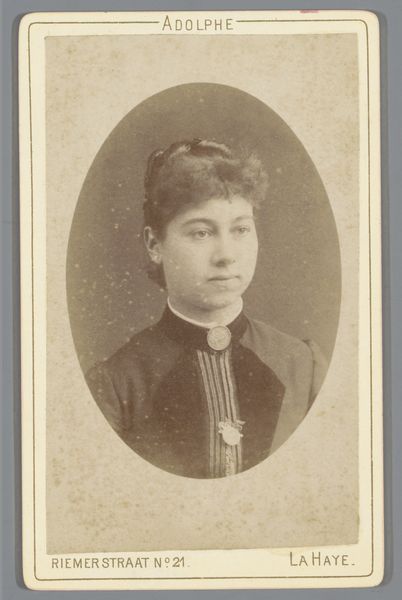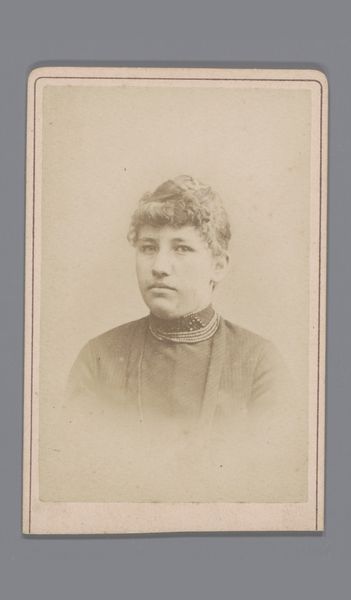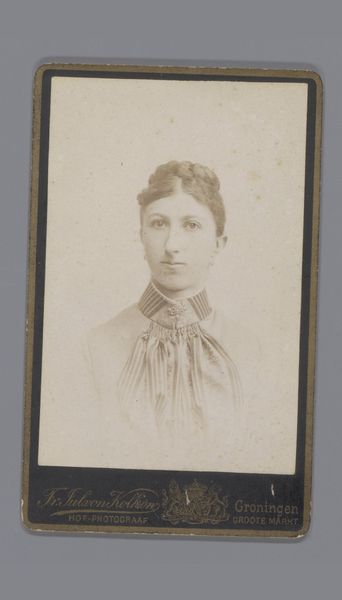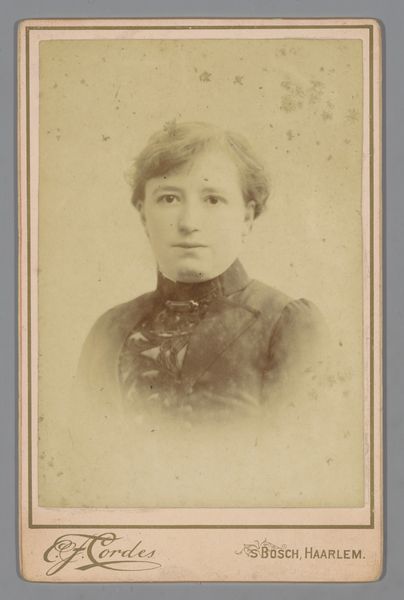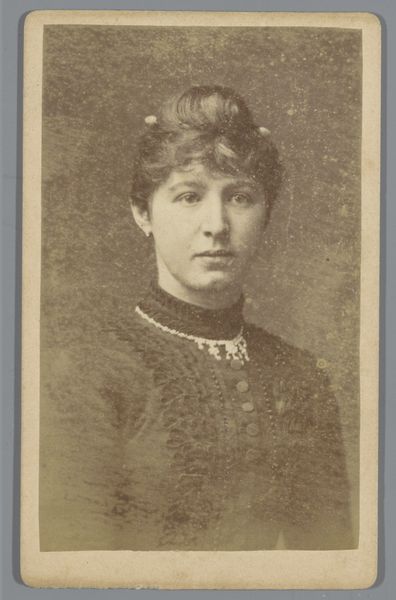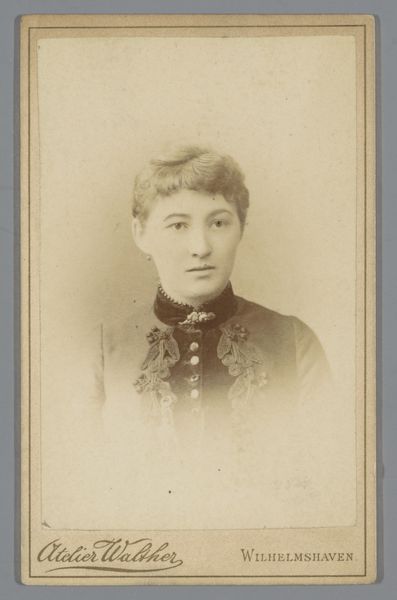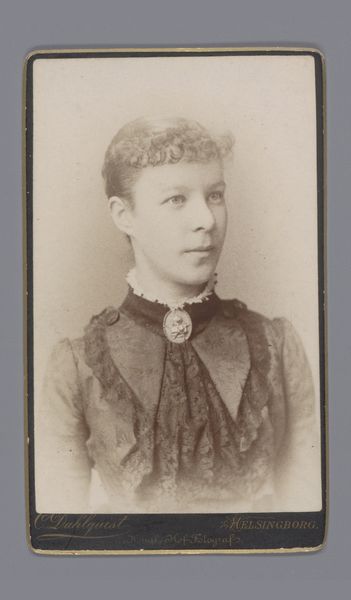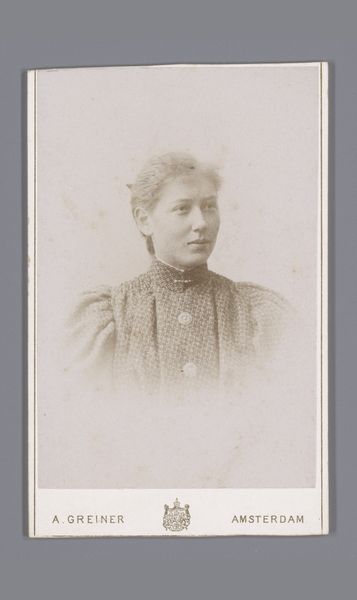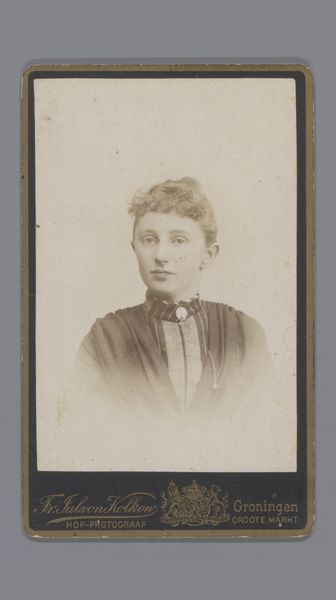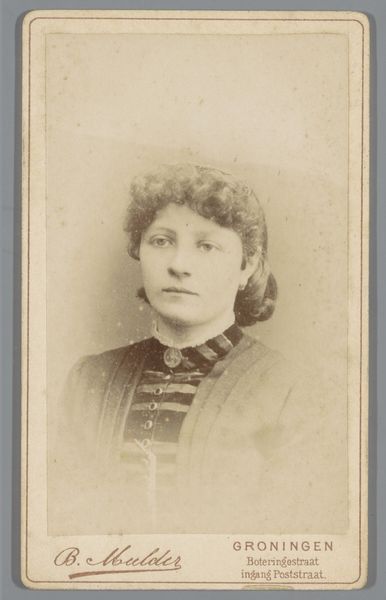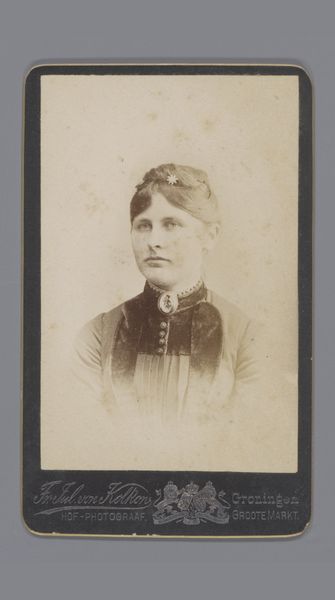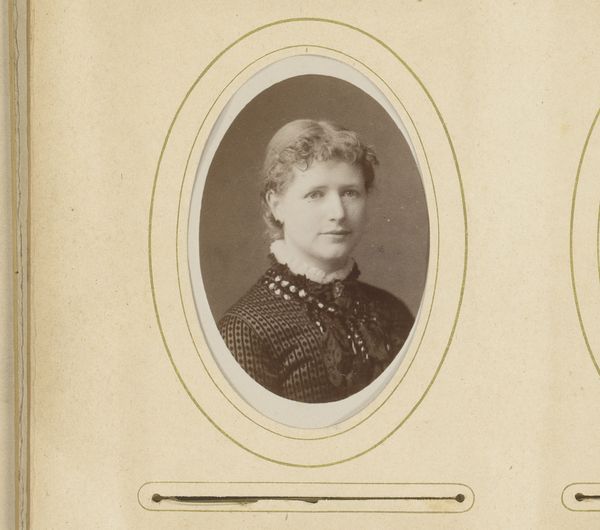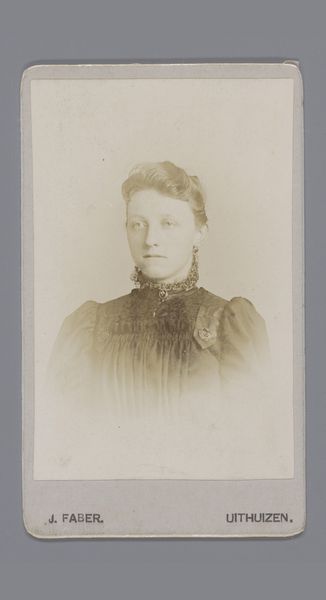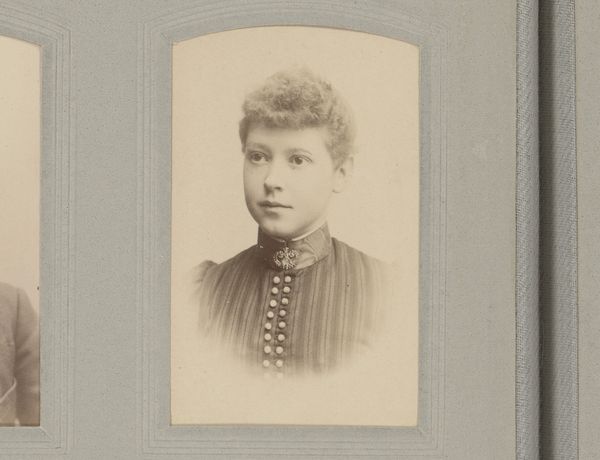
photography
#
portrait
#
photography
#
historical fashion
#
realism
Dimensions: height 104 mm, width 64 mm
Copyright: Rijks Museum: Open Domain
Curator: Welcome. Today we’re looking at a portrait held here at the Rijksmuseum. It's an intriguing photographic portrait of an unknown woman, made sometime between 1884 and 1896, attributed to Friedrich Julius von Kolkow. What strikes you most when you look at this image? Editor: It's the ambiguity, actually. The soft focus gives the piece this ethereal quality, like we’re peering into a past both intimate and distant. There’s a certain melancholy in her eyes, too, isn't there? Curator: TheRealist style in photography was flourishing during that period, coinciding with complex social and political changes affecting women’s lives, particularly in their evolving public roles. I wonder how she perceived that change and where it might have located her. Editor: I'm wondering if this controlled photographic setting allows her some kind of controlled self-expression. We’re so conditioned to see women of that era as either passive subjects or domestic figures. The lace, the pearl necklace…signifiers of class. Yet, there’s a palpable sense of self-possession in her posture, or is that my hopeful projection? Curator: Photography, while becoming increasingly accessible, remained imbued with the aspirations of its subjects. As for class, consider the specific economic contexts. The burgeoning middle class saw the mass dissemination of such photographs as an attempt at enfranchisement, in some ways mirroring the aristocracy. This image served not only as a symbol of personal achievement, or status, but more generally for belonging to the changing culture. Editor: That’s a poignant reading. This image now is part of this museum, itself a product of and participant in these class stratifications, of course. The layers of socio-political complexities are endlessly compelling to consider. I appreciate how your description opens it up. Curator: As do I yours, and in considering both points, let's leave our visitors now with a charge to not just ‘see’ the photograph, but feel the pulse of the society within. Editor: Indeed, consider how far we’ve come and, perhaps more importantly, how much further we still have to travel.
Comments
No comments
Be the first to comment and join the conversation on the ultimate creative platform.
